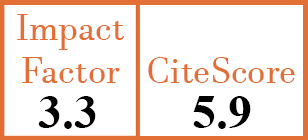Paediatric Rheumatology
Subclinical impairment of ovarian reserve in juvenile systemic lupus erythematosus after cyclophosphamide therapy
N.E. Aikawa, A.M. Sallum, R.M. Pereira, L. Suzuki, V.S. Viana, E. Bonfá, C.A. Silva
CER4999
2012 Vol.30, N°3
PI 0445, PF 0449
Paediatric Rheumatology
Free to view
(click on article PDF icon to read the article)
PMID: 22703605 [PubMed]
Received: 14/08/2011
Accepted : 10/01/2012
In Press: 26/06/2012
Published: 26/06/2012
Abstract
OBJECTIVES:
To perform systematic assessment of ovarian reserve markers using a combination of tests in juvenile systemic lupus erythematosus (JSLE) patients without amenorrhoea.
METHODS:
Twenty-seven consecutive JSLE female patients and 13 healthy controls without amenorrhoea were evaluated for 6 months. Ovarian reserve was assessed during early follicular phase by serum levels of follicle stimulating hormone (FSH), luteinising hormone (LH), estradiol, inhibin A, inhibin B and anti-Mullerian hormone (AMH). Ovarian size was measured by abdominal ultrasonography. Demographic data, disease activity, damage and treatment were also analysed.
RESULTS:
The median of current age was similar in JSLE patients and controls (16.5 vs. 15years, p=0.31) with a significantly higher age at menarche (13 vs. 12years, p=0.03). A trend of lower median total antral follicle count was observed in JSLE compared to controls (9 vs. 14.5, p=0.062) with similar median of other ovarian reserve parameters (p>0.05). Further evaluation of patients treated with cyclophosphamide and those without this treatment revealed a higher median FSH levels (6.4 vs. 4.6 IU/L, p=0.023). Inhibin B, AMH levels and ovarian volume were also lower but did not reach statistical significance (10.8 vs. 27.6 pg/mL, p=0.175; 0.6 vs. 1.5 ng/mL, p=0.276; 3.4 vs. 5 cm3, p=0.133; respectively). LH (2.7 vs. 2.9 IU/L, p=0.43), estradiol (50 vs. 38 pg/mL, p=0.337) and inhibin A (1.1 vs. 0 pg/mL, p=0.489) levels were comparable in both groups.
CONCLUSIONS:
Our study suggests that ovarian reserve after cyclophosphamide treatment may be hampered in spite of the presence of menstrual cycles emphasising the relevance of gonadal protection during the use of this alkylating agent.


